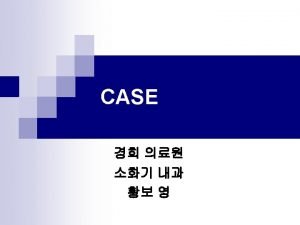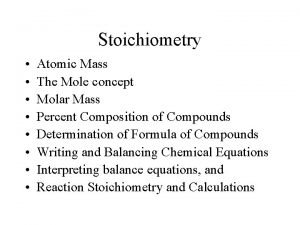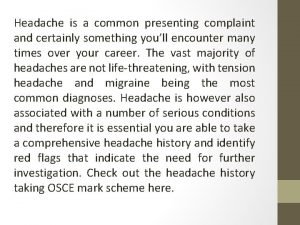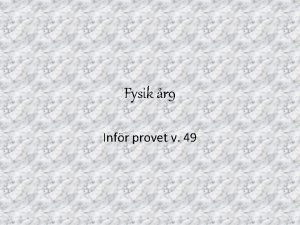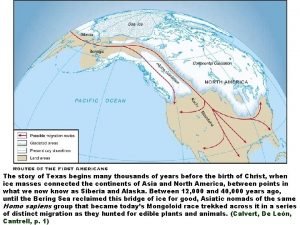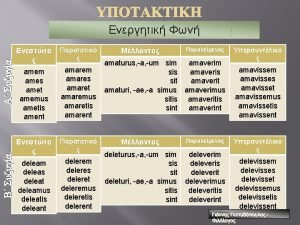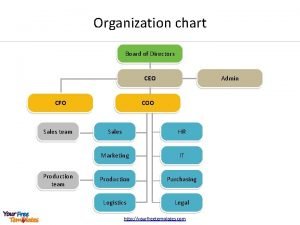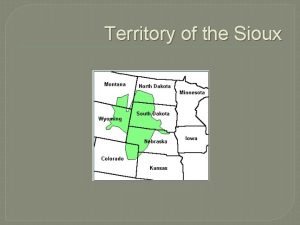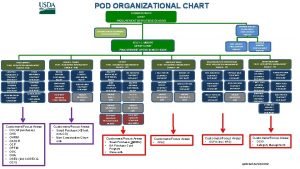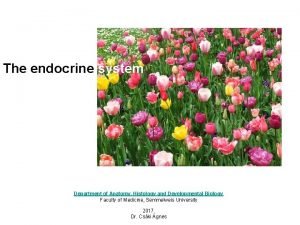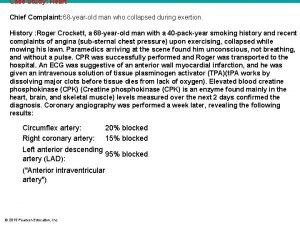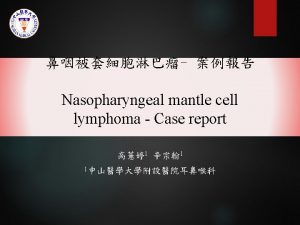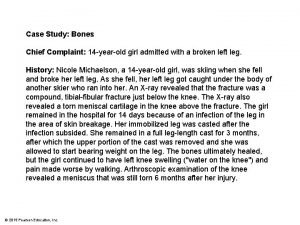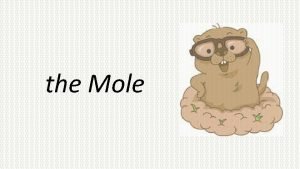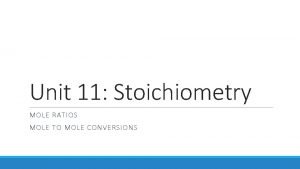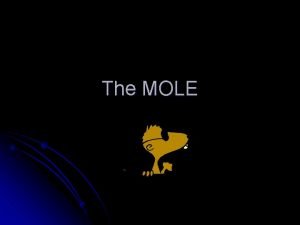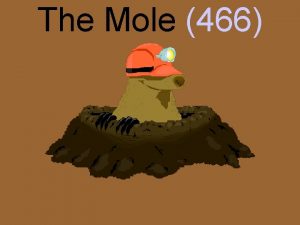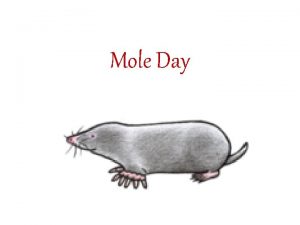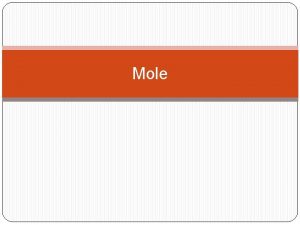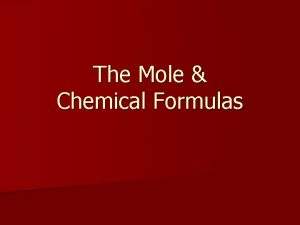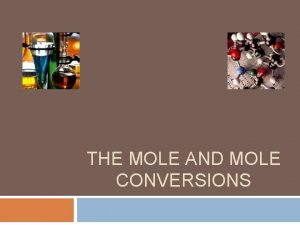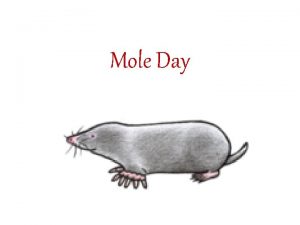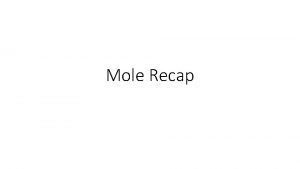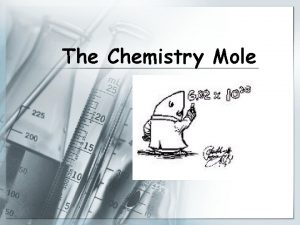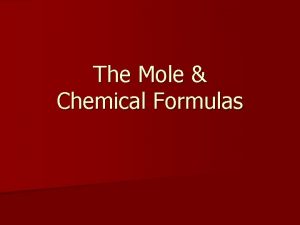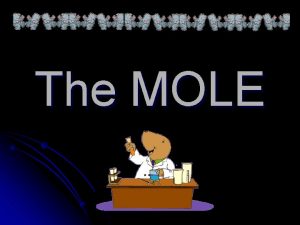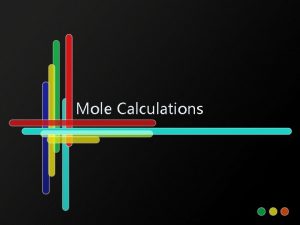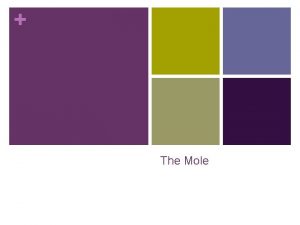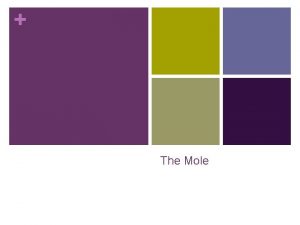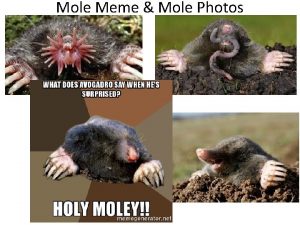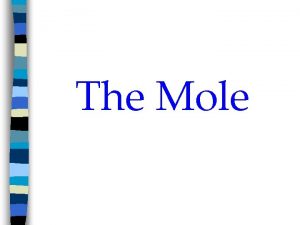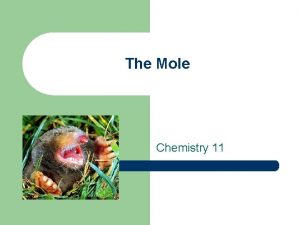Chief Complaint 48 yearold man with suspiciouslooking mole

































































































- Slides: 97

Chief Complaint: 48 -year-old man with suspicious-looking mole on his back. History: Max Burnell, a single, 48 -year-old avid long-distance runner previously in good health, presented to his primary physician for a yearly physical examination, during which a suspicious-looking mole was noticed on the back of his left arm, just proximal to the elbow. He reported that he has had that mole for several years, but thinks that it may have gotten larger over the past two years. Max reported that he has noticed itchiness in the area of this mole over the past few weeks. He had multiple other moles on his back, arms, and legs, none of which looked suspicious. Upon further questioning, Max reported that his aunt died in her late forties of skin cancer, but he knew no other details about her illness. Max is a computer programmer who spends most of the work week indoors. On weekends, however, he typically goes for a 5 -mile run and spends much of his afternoons gardening. He has a light complexion, blonde hair, and reports that he sunburns easily but uses protective sunscreen only sporadically. Physical Examination: Head, neck, thorax, and abdominal exams were normal, with the exception of a hard, enlarged, non-tender mass felt in the left axillary region. In addition, a 1. 6 x 2. 8 cm mole was noted on the dorsal upper left arm. The lesion had an appearance suggestive of a © 2015 Pearson Education, Inc.

© 2015 Pearson Education, Inc.

Figure 5 -4 a Melanocytes in stratum basale Melanin pigment Basement membrane Melanocytes a This micrograph shows the location and orientation of melanocytes in the stratum basale of a dark-skinned person. LM × 600

An Introduction to the Integumentary System • The Integument • Is the largest system of the body • Sixteen percent of body weight • 1. 5 to 2 m 2 in area • The integument is made up of two parts 1. 2. © 2015 Pearson Education, Inc. Cutaneous membrane (skin) Accessory structures

An Introduction to the Integumentary System • Two Components of the Cutaneous Membrane 1. Outer epidermis • Superficial epithelium (epithelial tissues) 2. Inner dermis • Connective tissues © 2015 Pearson Education, Inc.

Figure 5 -3 The Epidermis.

An Introduction to the Integumentary System • Accessory Structures • Originate in the dermis • Extend through the epidermis to skin surface • Hair • Nails • Multicellular exocrine glands © 2015 Pearson Education, Inc.

An Introduction to the Integumentary System • Connections • Cardiovascular system • Blood vessels in the dermis • Nervous system • Sensory receptors for pain, touch, and temperature © 2015 Pearson Education, Inc.

An Introduction to the Integumentary System • Hypodermis (Superficial Fascia or Subcutaneous Layer) • Loose connective tissue • Below the dermis • Location of hypodermic injections © 2015 Pearson Education, Inc.

Figure 5 -1 The Components of the Integumentary System. Cutaneous Membrane Accessory Structures Hair shaft Epidermis Pore of sweat gland duct Papillary layer Tactile (Meissner’s) corpuscle Dermis Reticular layer Sebaceous gland Arrector pili muscle Sweat gland duct Hair follicle Lamellated (pacinian) corpuscle Hypodermis Nerve fibers Sweat gland Artery Vein Fat © 2015 Pearson Education, Inc. Cutaneous plexus

An Introduction to the Integumentary System • Functions of Skin • Protection of underlying tissues and organs • Excretion of salts, water, and organic wastes (glands) • Maintenance of body temperature (insulation and evaporation) • Production of melanin © 2015 Pearson Education, Inc.

An Introduction to the Integumentary System • Functions of Skin • • Production of keratin Synthesis of vitamin D 3 Storage of lipids Detection of touch, pressure, pain, and temperature © 2015 Pearson Education, Inc.

5 -1 Epidermis • The Epidermis • Is avascular stratified squamous epithelium • Nutrients and oxygen diffuse from capillaries in the dermis © 2015 Pearson Education, Inc.

Figure 5 -3 The Epidermis. © 2015 Pearson Education, Inc.

5 -1 Epidermis • Cells of the Epidermis • Keratinocytes • Contain large amounts of keratin • Are the most abundant cells in the epidermis © 2015 Pearson Education, Inc.

5 -1 Epidermis • Thin Skin • Covers most of the body • Has four layers of keratinocytes • Thick Skin • Covers the palms of the hands and soles of the feet • Has five layers of keratinocytes © 2015 Pearson Education, Inc.

Figure 5 -3 The Epidermis (Part 3 of 3). Pores of sweat gland ducts Epidermal ridge Thick skin © 2015 Pearson Education, Inc. SEM × 20

5 -1 Epidermis • Specialized Cells of Stratum Basale • Merkel cells • Found in hairless skin • Respond to touch (trigger nervous system) • Melanocytes • Contain the pigment melanin • Scattered throughout stratum basale © 2015 Pearson Education, Inc.

5 -1 Epidermis • Keratinization • The formation of a layer of dead, protective cells filled with keratin • Occurs on all exposed skin surfaces except eyes • Skin life cycle • It takes 7 to 10 days for a cell to move from stratum basale to stratum corneum © 2015 Pearson Education, Inc.

5 -1 Epidermis • Perspiration • Insensible perspiration • Interstitial fluid lost by evaporation through the stratum corneum • Sensible perspiration • Water excreted by sweat glands • Dehydration results: • From damage to stratum corneum (e. g. , burns and blisters [insensible perspiration]) • From immersion in hypertonic solution (e. g. , seawater [osmosis]) © 2015 Pearson Education, Inc.

5 -1 Epidermis • Hydration • Results from immersion in hypotonic solution (e. g. , freshwater [osmosis]) • Causes swelling of epithelial cells, evident on the palms and soles © 2015 Pearson Education, Inc.

5 -2 Skin Color • Skin Color Is Influenced by Two Pigments 1. Carotene 2. Melanin • Blood circulation (red blood cells) © 2015 Pearson Education, Inc.

5 -2 Skin Color • Carotene • Orange-yellow pigment • Found in orange vegetables • Accumulates in epidermal cells and fatty tissues of the dermis • Can be converted to vitamin A © 2015 Pearson Education, Inc.

5 -2 Skin Color • Melanin • • Yellow-brown or black pigment Produced by melanocytes in stratum basale Stored in transport vesicles (melanosomes) Transferred to keratinocytes © 2015 Pearson Education, Inc.

5 -2 Skin Color • Function of Melanocytes • Melanin protects skin from sun damage • Ultraviolet (UV) radiation • Causes DNA mutations and burns that lead to cancer and wrinkles • Skin color depends on melanin production, not number of melanocytes © 2015 Pearson Education, Inc.

5 -2 Skin Color • Capillaries and Skin Color • Oxygenated red blood contributes to skin color • Blood vessels dilate from heat, skin reddens • Blood flow decreases, skin pales • Cyanosis • Bluish skin tint • Caused by severe reduction in blood flow or oxygenation © 2015 Pearson Education, Inc.

5 -2 Skin Color • Illness and Skin Color • Jaundice • Buildup of bile produced by liver • Yellow color • Pituitary tumor • Excess MSH © 2015 Pearson Education, Inc.

5 -3 Vitamin D 3 • Epidermal cells produce cholecalciferol (vitamin D 3) • In the presence of UV radiation • Liver and kidneys convert vitamin D 3 into calcitriol • Aids absorption of calcium and phosphorus • Insufficient vitamin D 3 • Can cause rickets © 2015 Pearson Education, Inc.

Figure 5 -6 Sources of Vitamin D 3. Sunlight Food Steroid compound Epidermis Cholecalciferol Dietary cholecalciferol Digestive tract Liver Intermediary product Stimulation of calcium and phosphate ion absorption Calcitriol Kidney © 2015 Pearson Education, Inc.

Figure 5 -7 Rickets. © 2015 Pearson Education, Inc.

5 -4 Epidermal Growth Factor (EGF) • Powerful peptide growth factor • Produced by glands (salivary and duodenum) • Used in laboratories to grow skin grafts • Functions of EGF • • Promotes division of germinative cells Accelerates keratin production Stimulates epidermal repair Stimulates glandular secretion © 2015 Pearson Education, Inc.

5 -5 The Dermis • Located between epidermis and subcutaneous layer • Anchors epidermal accessory structures (hair follicles, sweat glands) • Two components 1. Outer papillary layer 2. Deep reticular layer © 2015 Pearson Education, Inc.

5 -5 The Dermis • The Papillary Layer • Consists of areolar tissue • Contains smaller capillaries, lymphatics, and sensory neurons • Has dermal papillae projecting between epidermal ridges © 2015 Pearson Education, Inc.

5 -5 The Dermis • The Reticular Layer • Consists of dense irregular connective tissue • Contains larger blood vessels, lymphatic vessels, and nerve fibers • Contains collagen and elastic fibers • Contains connective tissue proper © 2015 Pearson Education, Inc.

5 -5 The Dermis • Dermatitis • An inflammation of the papillary layer • Caused by infection, radiation, mechanical irritation, or chemicals (e. g. , poison ivy) • Characterized by itch or pain © 2015 Pearson Education, Inc.

© 2015 Pearson Education, Inc.

5 -5 The Dermis • Dermal Strength and Elasticity • Presence of two types of fibers 1. Collagen fibers • Very strong, resist stretching but bend easily • Provide flexibility 2. Elastic fibers • Permit stretching and then recoil to original length • Limit the flexibility of collagen fibers to prevent damage to tissue 3. Skin turgor • Properties of flexibility and resilience © 2015 Pearson Education, Inc.

5 -5 The Dermis • Skin Damage • Sagging and wrinkles (reduced skin elasticity) are caused by: • • Dehydration Age Hormonal changes UV exposure © 2015 Pearson Education, Inc.

5 -5 The Dermis • Skin Damage • Stretch marks • Thickened tissue resulting from excessive stretching of skin due to: • Pregnancy • Weight gain © 2015 Pearson Education, Inc.

Figure 5 -8 Reticular Layer of Dermis. Reticular layer of dermis © 2015 Pearson Education, Inc. SEM × 1500

5 -5 The Dermis • Cleavage Lines • Collagen and elastic fibers in the dermis • Arranged in parallel bundles • Resist force in a specific direction • Cleavage (tension) lines establish important patterns • A parallel cut remains shut, heals well • A cut across (right angle) pulls open and scars © 2015 Pearson Education, Inc.

Figure 5 -9 Cleavage Lines of the Skin. ANTERIOR © 2015 Pearson Education, Inc. POSTERIOR

5 -5 The Dermis • The Dermal Blood Supply • Cutaneous plexus • A network of arteries along the reticular layer • Papillary plexus • Capillary network from small arteries in papillary layer • Venous plexus • Capillary return deep to the papillary plexus • Contusion • Damage to blood vessels resulting in “black-andblue” bruising © 2015 Pearson Education, Inc.

Figure 5 -10 Dermal Circulation. Dermal Capillary loop of subpapillary plexus papillae Hair Papillary layer Reticular layer Cutaneous plexus Lymphatic vessel © 2015 Pearson Education, Inc. Subpapillary plexus Epidermal ridges

5 -5 The Dermis • Innervation of the Skin • Nerve fibers in skin control: • Blood flow • Gland secretions • Sensory receptors • Light touch—tactile corpuscles, located in dermal papillae • Deep pressure and vibration—lamellated corpuscles, in the reticular layer © 2015 Pearson Education, Inc.

5 -6 The Hypodermis • The Hypodermis (Subcutaneous Layer) • • • Lies below the integument Stabilizes the skin Allows separate movement Made of elastic areolar and adipose tissues Connected to the reticular layer of integument by connective tissue fibers • Few capillaries and no vital organs • The site of subcutaneous injections using hypodermic needles © 2015 Pearson Education, Inc.

5 -6 The Hypodermis • Deposits of Subcutaneous Fat • Distribution patterns determined by hormones • Reduced by cosmetic liposuction (lipoplasty) © 2015 Pearson Education, Inc.

Figure 5 -11 Hypodermis. Adipocytes Hypodermis © 2015 Pearson Education, Inc. SEM × 250

5 -7 Hair • Hair, Hair Follicles, Sebaceous Glands, Sweat Glands, and Nails • • Integumentary accessory structures Derived from embryonic epidermis Located in dermis Project through the skin surface © 2015 Pearson Education, Inc.

5 -7 Hair • Human Body • The human body is covered with hair, except: • • Palms Soles Lips Portions of external genitalia © 2015 Pearson Education, Inc.

5 -7 Hair • Functions of Hair • Protects and insulates • Guards openings against particles and insects • Is sensitive to very light touch © 2015 Pearson Education, Inc.

5 -7 Hair • The Hair Follicle • • Located deep in dermis Produces nonliving hairs Wrapped in a dense connective tissue sheath Base is surrounded by sensory nerves (root hair plexus) © 2015 Pearson Education, Inc.

5 -7 Hair • Accessory Structures of Hair • Arrector pili • Involuntary smooth muscle • Causes hairs to stand up • Produces “goose bumps” • Sebaceous glands • Lubricate the hair • Control bacteria © 2015 Pearson Education, Inc.

5 -7 Hair • Regions of the Hair • Hair root • Lower part of the hair • Attached to the integument • Hair shaft • Upper part of the hair • Not attached to the integument © 2015 Pearson Education, Inc.

Figure 5 -12 a Hair Follicles and Hairs. Hair Sebaceous gland Arrector pili muscle Connective tissue sheath Root hair plexus a © 2015 Pearson Education, Inc. Hair follicles, showing the associated accessory structures

Figure 5 -12 b Hair Follicles and Hairs. Hair Structure The cuticle, although The medulla, or core, The cortex contains thick of the hair contains a layers of hard keratin, which thin, is very tough, and it contains hard keratin. flexible soft keratin. give the hair its stiffness. Follicle Structure The internal root sheath surrounds the hair root and the deeper portion of the shaft. The cells of this sheath disintegrate quickly, and this layer does not extend the entire length of the hair follicle. The external root sheath extends from the skin surface to the hair matrix. b Cross section through a hair follicle and a hair, near the junction between the hair root and hair shaft © 2015 Pearson Education, Inc. The glassy membrane is a thickened, clear layer wrapped in the dense connective tissue sheath of the follicle as a whole. Connective tissue sheath

Figure 5 -12 c Hair Follicles and Hairs. Hair shaft External root sheath Connective tissue sheath of hair follicle Internal root sheath Glassy membrane Cuticle of hair Cortex of hair Medulla of hair Matrix Hair papilla Subcutaneous adipose tissue Hair follicle LM × 60 c Histological section along the longitudinal axis of hair follicles © 2015 Pearson Education, Inc.

Figure 5 -12 d Hair Follicles and Hairs. Connective tissue sheath of hair follicle Glassy membrane External root sheath Internal root sheath Cuticle of hair Cortex of hair Medulla of hair Matrix Hair papilla Hair bulb Subcutaneous adipose tissue d © 2015 Pearson Education, Inc. Diagrammatic view of the base of a hair follicle

5 -7 Hair • Hair Production • Begins at the base of a hair follicle, deep in the dermis • The hair papilla contains capillaries and nerves • The hair bulb produces hair matrix • A layer of dividing basal cells • Produces hair structure • Pushes hair up and out of skin © 2015 Pearson Education, Inc.

5 -7 Hair • Hair Shaft Structure • Medulla • The central core • Cortex • The middle layer • Cuticle • The surface layer © 2015 Pearson Education, Inc.

5 -7 Hair • Keratin • As hair is produced, it is keratinized • Medulla contains flexible soft keratin • Cortex and cuticle contain stiff hard keratin © 2015 Pearson Education, Inc.

5 -7 Hair • Layers in the Follicle • Internal root sheath • The inner layer • Contacts the cuticle in lower hair root • External root sheath • Extends from skin surface to hair matrix • Glassy membrane • A dense connective tissue sheath • Contacts connective tissues of dermis © 2015 Pearson Education, Inc.

5 -7 Hair • Hair Growth Cycle • Growing hair • Is firmly attached to matrix • Club hair • Is not growing • Is attached to an inactive follicle © 2015 Pearson Education, Inc.

5 -7 Hair • Hair Growth Cycle • New hair growth cycle • Follicle becomes active • Produces new hair • Club hair is shed © 2015 Pearson Education, Inc.

5 -7 Hair • Types of Hairs • Vellus hairs • Soft, fine • Cover body surface • Terminal hairs • Heavy, pigmented • Head, eyebrows, and eyelashes • Other parts of body after puberty © 2015 Pearson Education, Inc.

5 -7 Hair • Hair Color • Produced by melanocytes at the hair papilla • Determined by genes © 2015 Pearson Education, Inc.

5 -8 Sebaceous Glands and Sweat Glands • Exocrine Glands in Skin • Sebaceous Glands (oil glands) • Holocrine glands • Secrete sebum • Two Types of Sweat Glands 1. Apocrine glands 2. Merocrine (eccrine) glands • Watery secretions © 2015 Pearson Education, Inc.

5 -8 Sebaceous Glands and Sweat Glands • Types of Sebaceous (Oil) Glands • Simple branched alveolar glands • Associated with hair follicles • Sebaceous follicles • Discharge directly onto skin surface • Sebum • Contains lipids and other ingredients • Lubricates and protects the epidermis • Inhibits bacteria © 2015 Pearson Education, Inc.

Figure 5 -13 The Structure of Sebaceous Glands and Sebaceous Follicles. Sebaceous follicle Sebaceous gland Lumen (hair removed) Wall of hair follicle Epidermis Basement membrane Discharge of sebum Lumen Dermis Breakdown of cell membranes Mitosis and growth Subcutaneous layer © 2015 Pearson Education, Inc. Basal cells Sebaceous gland LM × 150

Figure 5 -13 The Structure of Sebaceous Glands and Sebaceous Follicles (Part 1 of 3). Sebaceous follicle Epidermis Dermis Subcutaneous layer © 2015 Pearson Education, Inc. Sebaceous gland

Figure 5 -13 The Structure of Sebaceous Glands and Sebaceous Follicles (Part 2 of 3). Lumen (hair removed) Wall of hair follicle Basement membrane Discharge of sebum Lumen Breakdown of cell membranes Mitosis and growth Basal cells © 2015 Pearson Education, Inc.

Figure 5 -13 The Structure of Sebaceous Glands and Sebaceous Follicles (Part 3 of 3). Lumen (hair removed) Wall of hair follicle Basement membrane Basal cells Sebaceous gland © 2015 Pearson Education, Inc. LM × 150

5 -8 Sebaceous Glands and Sweat Glands • Apocrine Sweat Glands • • • Found in armpits, around nipples, and groin Secrete products into hair follicles Produce sticky, cloudy secretions Break down and cause odors Surrounded by myoepithelial cells • Squeeze apocrine gland secretions onto skin surface • In response to hormonal or nervous signal © 2015 Pearson Education, Inc.

Figure 5 -14 a Sweat Glands. Myoepithelial cell Sweat pore Connective tissue of dermis Duct Apocrine gland cells Duct of apocrine sweat gland Lumen Sectional plane through apocrine sweat gland Apocrine sweat gland a LM × 459 Apocrine sweat glands secrete a thick, potentially odorous fluid into hair follicles. © 2015 Pearson Education, Inc. A section through a merocrine sweat gland

5 -8 Sebaceous Glands and Sweat Glands • Merocrine (Eccrine) Sweat Glands • • Widely distributed on body surface Especially on palms and soles Coiled, tubular glands Discharge directly onto skin surface © 2015 Pearson Education, Inc.

5 -8 Sebaceous Glands and Sweat Glands • Merocrine (Eccrine) Sweat Glands (cont. ) • Sensible perspiration • Water, salts, and organic compounds • Functions of merocrine sweat gland activity • Cools skin • Excretes water and electrolytes • Flushes microorganisms and harmful chemicals from skin © 2015 Pearson Education, Inc.

Figure 5 -14 b Sweat Glands. Sweat pore Duct Myoepithelial cells Merocrine gland cells Duct of apocrine sweat gland Lumen Sectional plane through apocrine sweat gland © 2015 Pearson Education, Inc. A section through a merocrine sweat gland Merocrine sweat gland b LM × 243 Merocrine sweat glands discharge a watery fluid onto the surface of the skin.

5 -8 Sebaceous Glands and Sweat Glands • Other Integumentary Glands 1. Mammary glands • Produce milk 2. Ceruminous glands • Produce cerumen (earwax) • Protect the eardrum © 2015 Pearson Education, Inc.

5 -8 Sebaceous Glands and Sweat Glands • Control of Glands • Autonomic nervous system (ANS) • Controls sebaceous and apocrine sweat glands • Works simultaneously over entire body • Merocrine sweat glands • Controlled independently • Sweating occurs locally • Thermoregulation • The main function of sensible perspiration • Works with cardiovascular system • Regulates body temperature © 2015 Pearson Education, Inc.

5 -9 Nails • Protect fingers and toes • Made of dead cells packed with keratin • Metabolic disorders can change nail structure • Nail Production • Occurs in a deep epidermal fold near the bone called the nail root © 2015 Pearson Education, Inc.

5 -9 Nails • Structure of a Nail • Nail body • The visible portion of the nail • Covers the nail bed • Lunula • The pale crescent at the base of the nail • Sides of nails • Lie in lateral nail grooves • Surrounded by lateral nail folds © 2015 Pearson Education, Inc.

5 -9 Nails • Structure of a Nail • Skin beneath the distal free edge of the nail • Is the hyponychium (onyx = nail) • Visible nail emerges: • From the eponychium (cuticle) • At the tip of the proximal nail fold © 2015 Pearson Education, Inc.

Figure 5 -15 The Structure of a Nail. Direction of growth Lateral nail groove Free edge Nail body Lateral nail fold Nail body Lunula Nail bed Phalanx (bone of fingertip) b A cross-sectional view Eponychium Proximal nail fold a A superficial view Eponychium Proximal nail fold Lunula Nail body Nail root Epidermis c A longitudinal section © 2015 Pearson Education, Inc. Dermis Phalanx Hyponychium

Figure 5 -15 a The Structure of a Nail. Direction of growth Free edge Lateral nail fold Nail body Lunula Proximal nail fold Eponychium a A superficial view © 2015 Pearson Education, Inc.

Figure 5 -15 b The Structure of a Nail. Lateral nail groove Nail body Lateral nail fold Nail bed Phalanx (bone of fingertip) © 2015 Pearson Education, Inc. b A cross-sectional view

Figure 5 -15 c The Structure of a Nail. Eponychium Proximal nail fold Lunula Nail body Nail root Epidermis c A longitudinal section © 2015 Pearson Education, Inc. Dermis Phalanx Hyponychium

5 -10 Repair of the Integument • Repair of the Integument Following an Injury • • • Bleeding occurs Mast cells trigger inflammatory response A scab stabilizes and protects the area Germinative cells migrate around the wound Macrophages clean the area Fibroblasts and endothelial cells move in, producing granulation tissue © 2015 Pearson Education, Inc.

Figure 5 -16 Repair of Injury to the Integument (Part 1 of 4). 1 Inflammatory Phase Bleeding occurs at the site of injury immediately after the injury, and mast cells in the region trigger an inflammatory response. Epidermis Dermis Mast cells © 2015 Pearson Education, Inc.

Figure 5 -16 Repair of Injury to the Integument (Part 2 of 4). 2 Migratory Phase After several hours, a scab has formed and cells of the stratum basale are migrating along the edges of the wound. Phagocytic cells are removing debris, and more of these cells are arriving with the enhanced circulation in the area. Clotting around the edges of the affected area partially isolates the region. © 2015 Pearson Education, Inc. Migrating epithelial cells Macrophages and fibroblasts Granulation tissue

Figure 5 -16 Repair of Injury to the Integument (Part 3 of 4). 3 Proliferation Phase About a week after the injury, the scab has been undermined by epidermal cells migrating over the collagen fiber meshwork produced by fibroblast proliferation and activity. Phagocytic activity around the site has almost ended, and the fibrin clot is dissolving. © 2015 Pearson Education, Inc. Fibroblasts

Figure 5 -16 Repair of Injury to the Integument (Part 4 of 4). 4 Scarring Phase After several weeks, the scab has been shed, 4 and the epidermis is complete. A shallow depression marks the injury site, but fibroblasts in the dermis continue to create scar tissue that will gradually elevate the overlying epidermis. © 2015 Pearson Education, Inc. Scar tissue

5 -10 Repair of the Integument • Repair of the Integument Following an Injury • Fibroblasts produce scar tissue • Inflammation decreases, clot disintegrates • Fibroblasts strengthen scar tissue • A raised keloid may form © 2015 Pearson Education, Inc.

Figure 5 -17 A Keloid. © 2015 Pearson Education, Inc.

5 -11 Effects of Aging on the Integumentary System • Effects of Aging • Epidermal thinning • Decreased numbers of dendritic (Langerhans) cells • Decreased vitamin D 3 production • Decreased melanocyte activity • Decreased glandular activity (sweat and oil glands) © 2015 Pearson Education, Inc.

5 -11 Effects of Aging on the Integumentary System • Effects of Aging • • • Reduced blood supply Decreased function of hair follicles Reduction of elastic fibers Decreased hormone levels Slower repair rate © 2015 Pearson Education, Inc.

5 -11 Importance of the Integumentary System • Protects and interacts with all organ systems • Changes in skin appearance are used to diagnose disorders in other systems © 2015 Pearson Education, Inc.

Figure 5 -18 System Integrator. S Y S T E M I N T E G R A T O R © 2015 Pearson Education, Inc. Page 380 Skeletal Muscular Nervous Page 647 Page 776 Page 558 Endocrine Cardiovascular Lymphatic Page 824 Page 874 Respiratory Digestive Page 929 Urinary Page 1010 Page 1090 ABOUT THE SYSTEM INTEGRATORS Since each body system interacts with ever other body system, no one system can be completely understood in isolation. The integration of the various systems allows the human body to function seamlessly, and when disease or injury strikes, multiple systems must respond to heal it. These charts will introduce the body systems one by one. In so doing, you will see how previously studied systems interact with each other and contribute to overall body homeostasis. As we progress through the organ systems, the complementary nature of these Interactions will become clear. Homeostasis depends on the thorough integration of all the body systems working as one. Reproductive The integumentary system provides physical protection against environmental hazards. It forms the external surface of the body and protects it from dehydration, environmental chemicals, and external forces. The integument (skin) is separated and insulated from the rest of the body by the subcutaneous layer, but it is interconnected with the rest of the body by an extensive circulatory network of blood vessels and lymphatic vessels. As a result, although the protective mechanical functions of the skin can be discussed independently, its physiological activities are always closely integrated with those of other systems. Page 285 The INTEGUMENTARY System
 Man vs society examples
Man vs society examples Cc chief complaint
Cc chief complaint Chief complaint of malnutrition
Chief complaint of malnutrition Patient cc
Patient cc Wingspread classification of anorectal malformation
Wingspread classification of anorectal malformation Chief complaint of hemorrhoids
Chief complaint of hemorrhoids Chief complaint template
Chief complaint template Patient chief complaint
Patient chief complaint Diarrhea chief complaint
Diarrhea chief complaint Chief complaint present illness
Chief complaint present illness Chapter 9 lesson 3 commander in chief and chief diplomat
Chapter 9 lesson 3 commander in chief and chief diplomat Stoichiometry worksheet #2 (mole-mass mass-mole problems)
Stoichiometry worksheet #2 (mole-mass mass-mole problems) Stoichiometry mole-mole
Stoichiometry mole-mole Phosphorus + oxygen equation
Phosphorus + oxygen equation Grams to gram
Grams to gram Mass to grams conversion
Mass to grams conversion Mole-mole factor
Mole-mole factor Mole-mass-volume relationships
Mole-mass-volume relationships Dish tv complaint email id ceo
Dish tv complaint email id ceo Presenting complaint
Presenting complaint Handling complaint ppt
Handling complaint ppt Letter of complaint task
Letter of complaint task Presenting complaint
Presenting complaint Pain history taking
Pain history taking Complaint against depository participant
Complaint against depository participant Who brings the complaint against hermia to theseus
Who brings the complaint against hermia to theseus Complaint letter parts
Complaint letter parts Customer complaint student response worksheet
Customer complaint student response worksheet Letter of complaint structure
Letter of complaint structure Irda complaint
Irda complaint Epso complaint
Epso complaint Sample complaint form
Sample complaint form When dealing with a complaint it is vital to remember that
When dealing with a complaint it is vital to remember that Complaint dialogue 3 person
Complaint dialogue 3 person Complaint handling definition
Complaint handling definition The role of the complaint resolution unit (cru) is to
The role of the complaint resolution unit (cru) is to Data acquisition form nadra
Data acquisition form nadra General banking guidelines of bangladesh bank
General banking guidelines of bangladesh bank Sample complaint form
Sample complaint form 21 cfr 820 complaint definition
21 cfr 820 complaint definition Complaint present
Complaint present Omma complaint
Omma complaint Gott liebt jeden menschen
Gott liebt jeden menschen An hungry man is an angry man
An hungry man is an angry man By one man sin
By one man sin Conflict in literature
Conflict in literature Rich man poor man bible
Rich man poor man bible You live to learn
You live to learn Old man and new man
Old man and new man Man vs himself definition
Man vs himself definition The white man's burden detroit journal cartoon (1898)
The white man's burden detroit journal cartoon (1898) Sträckan hastighet tid
Sträckan hastighet tid Trene med mensen
Trene med mensen Characteristics of the carnal man
Characteristics of the carnal man The cask of amontillado man vs self
The cask of amontillado man vs self Executive departments definition
Executive departments definition My story is one of many thousands
My story is one of many thousands Firefighter interview tips
Firefighter interview tips Verbal irony in the ransom of red chief
Verbal irony in the ransom of red chief Cso scotland
Cso scotland Chief technologist
Chief technologist Blind son of odin
Blind son of odin Chief technology strategist
Chief technology strategist Chief financial officer organization chart
Chief financial officer organization chart Ibm chief data officer
Ibm chief data officer 6 chief parts of luther's small catechism
6 chief parts of luther's small catechism Block 40 chief eval
Block 40 chief eval Chief executive powers
Chief executive powers Chief factory for digestive enzymes
Chief factory for digestive enzymes According to postema what habit is often common in umpires
According to postema what habit is often common in umpires Sioux territory
Sioux territory Chief procurement officer organization chart
Chief procurement officer organization chart Chief improvement officer
Chief improvement officer Chief black kettle
Chief black kettle Religion
Religion Philoprogentiveness
Philoprogentiveness Eft deputy chief
Eft deputy chief Chief executive boards international
Chief executive boards international Chief network architect
Chief network architect Nitrogen in plants is needed for
Nitrogen in plants is needed for Chief paul hewitt park city
Chief paul hewitt park city Chief complain
Chief complain Chief engineer standing order sample
Chief engineer standing order sample Fdr as chief legislator
Fdr as chief legislator Chief executive power
Chief executive power Martin pratt camden
Martin pratt camden Tarrytown chief resident conference
Tarrytown chief resident conference Chief executive power
Chief executive power The chief cornerstone high school
The chief cornerstone high school Chief accountability officer
Chief accountability officer Hypothalamus
Hypothalamus Chief accountant heart of darkness
Chief accountant heart of darkness Chapter 14 the presidency in action answer key
Chapter 14 the presidency in action answer key Chief angaska
Chief angaska Principal chief controller of accounts
Principal chief controller of accounts Navy chief information officer
Navy chief information officer Alcock v chief constable
Alcock v chief constable Adolfo gonzales chief probation officer
Adolfo gonzales chief probation officer





